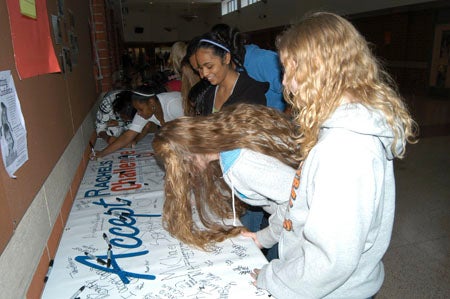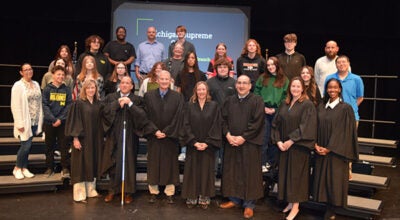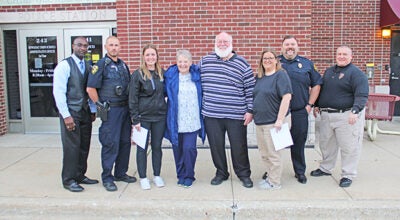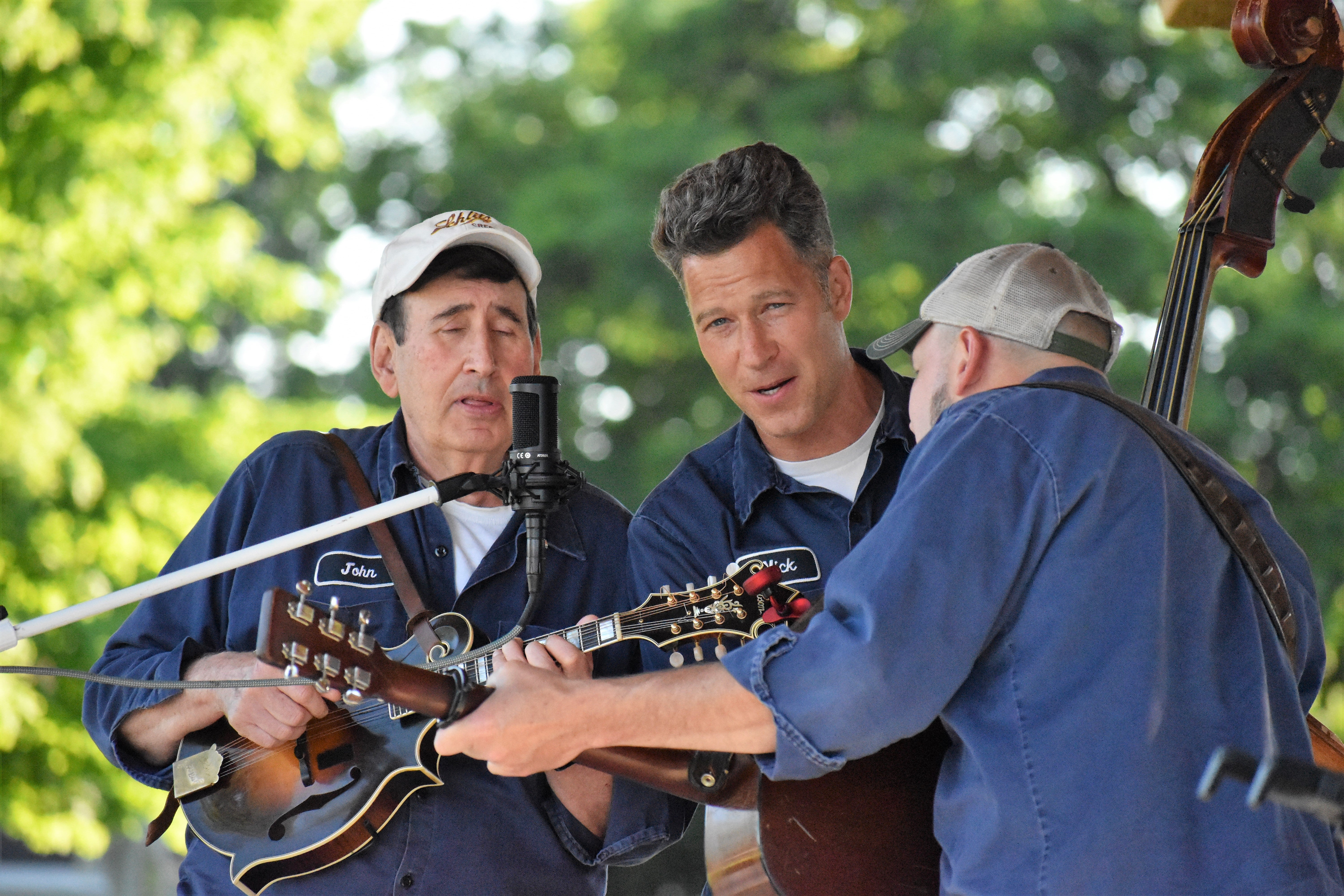Students take ‘Rachel’s Challenge’
Published 5:19 pm Tuesday, November 13, 2012

DUHS freshmen sign a banner accepting “Rachel’s Challenge” for a chain reaction of kindness and compassion.
Rachel Joy Scott, 17, was the first of 12 students and a teacher gunned down by classmates Eric Harris and Dylan Klebold at Columbine High School in Littleton, Colo., on April 20, 1999, in the worst school shooting in U.S. history.
Many Dowagiac, Niles New Tech, Cassopolis and Marcellus seventh-, eighth- and ninth-graders who took Rachel’s Challenge Tuesday hadn’t even been born then.
The kindness and compassion Rachel chronicled in six journals are perpetuated by her father, Darrell, step-mom Sandy, four siblings and a team of speakers, including beat box master Neil McIntyre.
Midwest Energy in Cassopolis sponsored two assemblies for 900 students at Dowagiac Middle School Performing Arts Center; 100 stayed for afternoon training to equip them to carry the message into their schools.
Video footage of the massacre and its aftermath, combined with Rachel’s drawings and writing, pack an emotional wallop in a multimedia presentation countering bullying and teen suicide.
FOR (Friends of Rachel) clubs sustain the campaign’s goals long-term, fanning a global ripple for a girl who liked funny hats and who felt destined to appear on “Oprah.”
“This suburban high school outside of Denver nobody thought anything bad would ever happen,” McIntyre said. “We’re not here to talk about how she died, but how she lived.”
Rachel sat outside, eating lunch that first warm spring day.
Her brother, Craig, a sophomore wrestler, huddled under a library table with two friends who perished. Isaiah, one of the few black students, died with racial slurs ringing in his ears.
“(The Scotts) took the horrible murder of their daughter and found a way to transform it into something positive,” McIntyre said. “Each of us will face something tragic in our lives. It’s up to us what we do. I never met Rachel, but I know her family. All it takes to start a chain reaction is little acts of kindness that ripple out and cause more people to do kind things.”
Mark Farrington’s family moved to Littleton when he was in eighth grade. His parents bickered constantly. He felt isolated and spewed frustration at fellow students.
“All that changed the day I met Rachel. I never forgot our conversation that gave me a positive outlook on life,” said Farrington, who wrote a letter after her death and drove from Pennsylvania to deliver it to her grave.
“Who do you want to be? What kind of impact do you want to have when people dress in black and look back on your life?” McIntyre asked. “If you want to get respect, give respect. Words can hurt or heal.”
Anne Frank, a 15-year-old who died in a Holocaust concentration camp, inspired Rachel to keep a diary.
“More than 18 million people have heard Rachel’s story,” McIntyre said. “Kids in New Zealand and Australia practice kindness in her memory.”
Twenty-seven babies are known to be named for Rachel.
In 2010, 4,000 people packaged more than a million meals for Haiti in less than eight hours in tribute to Rachel.
CNN televised Rachel’s memorial service for the largest audience in its history.
“I write not for the sake of glory, not for the sake of fame, not for the sake of success, but for the sake of my soul,” Rachel said.
Five paths to a chain reaction of kindness and compassion
1. Look for the best in others and eliminate prejudice.
2. Treat others the way you want to be treated.
3. Choose positive influences.
4. Speak words of kindness — not cruelty.
5. Forgive yourself and others.






